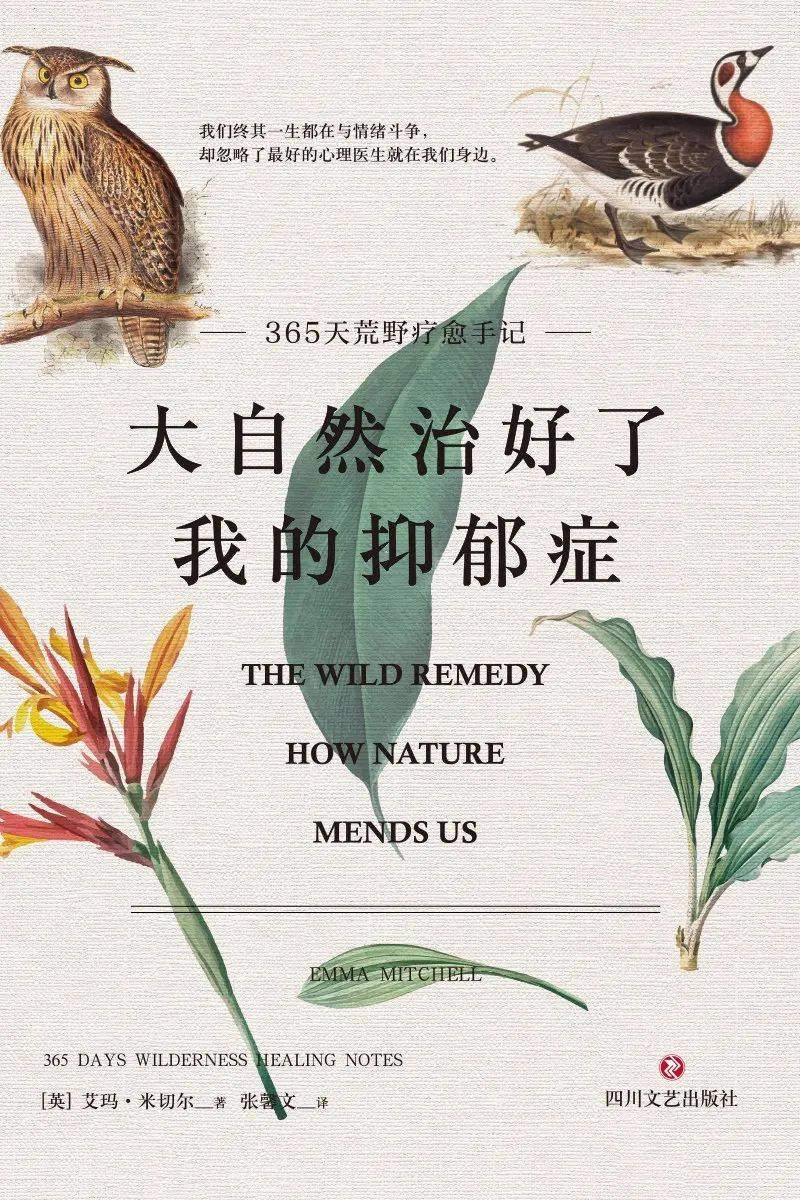The genius architect Antoni Gaudí once said, “All the answers are in nature.” For Emma Mitchell, a botanist who has been suffering from depression for 25 years, nature is the best therapist. Taking a walk among flowers and trees every day can have the same effect as medication and talk therapy.
Of course, Emma Mitchell is not the first to realize the soothing effect of outdoor walks on mental well-being. Many literary works mention that countryside walks can alleviate depression, inspire creativity, and accelerate recovery. In the 19th century, Danish philosopher and poet Søren Kierkegaard praised daily walks: “Walking maintains my well-being every day, keeping diseases at bay. Through walking, I get my best ideas, and there is no mental pain that cannot be eased by walking.” The actual effectiveness of this has been widely proven. In the early 1980s, a form of therapy called “forest bathing” began to emerge and gained popularity, which involves spending time in forests or woodlands, allowing the mind and body to immerse in a natural atmosphere. According to studies, a quarter of Japanese people have experienced this immersion in plants as a self-healing method to relieve symptoms of physical and mental illnesses. In Japan, when people feel unwell, they go to the forest for a while to be close to plants, just as the British go to a pharmacy for the common medication ibuprofen.
In recent years, to better understand “forest bathing,” targeted studies have found that walking in green nature directly benefits many systems in the body. Research shows that subjects who have spent time in nature, especially in woodlands, experience lower blood pressure, reduced levels of the stress hormone cortisol, relief from anxiety, and a slowed pulse rate. After spending time in the forest, the activity of the sympathetic nervous system in the body decreases, and the fight-or-flight response to stress diminishes. Additionally, there are special white blood cells called “natural killer cells” whose activity increases after exposure to nature. These cells can kill virus-infected cells and certain cancer cells. These biochemical reactions lasted for a month in subjects who were studied, with no similar changes observed in participants spending the same amount of time in urban environments.
Further studies provide specific explanations. To prevent infections from viruses and bacteria, many plants release volatile substances and oils, collectively known as plant hormones. Research teams studying “forest bathing” found that inhaling plant hormones has similar effects on the human immune, endocrine, circulatory, and nervous systems. Another surprising way to affect serotonin levels is through intimate contact with soil. Sometimes, people come into contact with beneficial bacteria in the soil, whose cell walls contain a protein that triggers the release of serotonin in specific neurons in the human brain. Lastly, mild exercise like walking leads to the release of endorphins in the bloodstream. This neurotransmitter can reduce pain and induce a mild euphoria without strong odors but with significant effects on the body.
With the combined effects of sunlight, plant hormones, and beneficial soil bacteria, walking in gardens, fields, and woodlands is like entering an invisible natural medicine cabinet, providing neurological relaxation: an unseen and unheard reaction happens in the brain, offering a soothing and healing sensation.
The book “Nature Cured My Depression” depicts the author’s explorations in the outdoors over a year, from challenging walks on painful days to explorations on bright, sunny days filled with the fragrance of flowers and the singing of birds. Being surrounded by vast nature and observing the intricate microcosm on tree stumps or in clusters of grass significantly influenced the author’s mental state. As described by the author: “During walks, my brain enters a state of focus. I diligently collect plant samples, empty snail shells, berries, and hops, feeling immersed in the details, deeply engaged in the environment around me. I strongly feel that this stems from an ancient instinct for exploration, which can dissipate and eliminate anxiety, allowing me to focus on the present during walks. I see it as a form of outdoor yoga.” In the book, she describes common species that can be found in urban parks, such as discovering new willow catkins among colorful autumn leaves or spotting a sparrow hawk flying over a wheat stubble… all providing great solace for the soul.
However, the author emphasizes that she would never suggest replacing professional treatment for depression with this method, “I still need to rely on antidepressants and talk therapy to prevent deterioration of my condition.” Depression severity depends on various factors like seasons and daily stress levels. When the basic effects of antidepressants and related treatments are insufficient to prevent her from sinking into negativity, walking among hazelnut trees and hawthorns can lower cortisol levels, induce neurotransmitter changes, effectively combat depression. Even on good days, walking a few times a week seems to have a cumulative effect, making the condition less severe during periods of low mood.
Editor: Zheng Wenfeng
Reviewer: Tang Xinjian
Approved by: Xiao Yan


